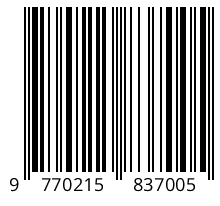Al-Qur�an dan Sains?(Bukti Kebenaran dalam Kasus Propolis Madu)
DOI:
https://doi.org/10.18592/khazanah.v12i2.305Abstract
Exposure free radicals in the activity of this life can not be avoided, included exposure free radicals from food additive espesifically Rhodamine B. Carcinogenic effect of Rhodamin B can be caused by Poly Aromatic Hydrocarbons structure that are destructive to the liver as metabolism organ. The purpose of this study was to prove the antioxidant activity of Honey Propolis against liver damage caused by exposure of Rhodamine B as free radical sources. Indicator of liver damage can be indicated by MDA, a marker of oxidative stress that occurs in these organs. The methode was used experimental methode, with seven treatment groups, namely: (1) normal group, (2) the induction of Rhodamin B without propolis therapy group, (3) the induction of Rhodamin B with Honey Propolis therapy with three dose levels are 350 mg, 700 mg and 1050 mg that are given at intervals of two hours after the administration of Rhodamine B (4) Honey Propolis therapy groups are given at interval of 1 week aftertheadministrationof RhodamineBwiththreedoselevels.MDAlevelsweremeasuredbyTBARS method. The results showed that the levels of Malondialdehyde declined steadily in the group treated with honey propolis to less than control groups. There are significant differences in MDA levels between the treatment groups Honey Propolis therapy (p = 0.034, p <0.05). Based on these results, it can be concluded that Honey propolis dose 700 mg act as therapeutic agent in liver damage due to exposure of Rhodamine B significantly.The results ofthis studyprove thetruth ofthe Quraninthe QS. Al-Nahl (16): 69of thewonders ofhoneyin preventingliver damagedue toexposure tohazardous substancesin food.Downloads
Published
2014-09-27
How to Cite
Erna Susanti, M. Z. dan. (2014). Khazanah: Jurnal Studi Islam Dan Humaniora, 12(2). https://doi.org/10.18592/khazanah.v12i2.305
Issue
Section
Articles
License
Authors who publish with this journal agree to the following terms:
- Authors retain copyright and grant the journal right of first publication with the work simultaneously licensed under a Creative Commons Attribution License that allows others to share the work with an acknowledgement of the work's authorship and initial publication in this journal.
- Authors are able to enter into separate, additional contractual arrangements for the non-exclusive distribution of the journal's published version of the work (e.g., post it to an institutional repository or publish it in a book), with an acknowledgement of its initial publication in this journal.
- Authors are permitted and encouraged to post their work online (e.g., in institutional repositories or on their website) prior to and during the submission process, as it can lead to productive exchanges, as well as earlier and greater citation of published work.

























